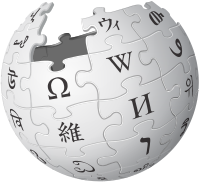
Photo from wikipedia
This study integrates a brand community theoretical framework and a social networks approach to the study of political marketing on social media. It analyzes Twitter activity by and about all… Click to show full abstract
This study integrates a brand community theoretical framework and a social networks approach to the study of political marketing on social media. It analyzes Twitter activity by and about all Republican candidates during the month of January 2016 prior to the Iowa primary caucus. Specifically, it identifies key patterns of information flow and political brand community emergence surrounding each candidate as well as brand social mediators who play influential roles in content flow. Findings detect network clusters - subgroups of siloed users - who converse to exchange information with one another rather than with disconnected others in any given political brand community. We classify these clusters in two groups: direct communities that surround a brand – here, a candidate – and indirect communities that consist of users who talk about the political brands but are not directly connected to the brand. Within this fragmented community structure, brand social mediators have the power to bridge direct and indirect brand communities across the network. Among the winning and trailing brand communities, different sets of brand social mediators, patterns of information flow, and network structures emerge. The findings suggest that the more successful a political brand is in voter polls, the weaker the social ties and relationships are within the brand communities. The interactions between political brands and their direct vs. indirect communities also exhibit different patterns of information flow. While direct brand communities demonstrate a higher level of reciprocity, indirect brand communities show a higher level of density. Implications and directions for future research are discussed.
Journal Title: Journal of Political Marketing
Year Published: 2019
Link to full text (if available)
Share on Social Media: Sign Up to like & get
recommendations!